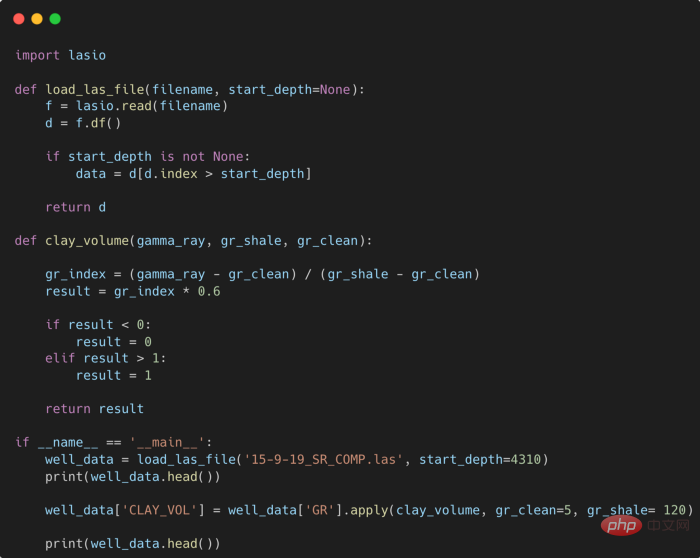 Backend Development
Backend Development PHP Tutorial
PHP Tutorial How to sort multiple arrays or multidimensional arrays using the array_multisort function?
How to sort multiple arrays or multidimensional arrays using the array_multisort function?array_multisort() can be used to sort multiple arrays at one time, or to sort multidimensional arrays according to a certain dimension or multiple dimensions.
array_multisort — Sort multiple arrays or multidimensional arrays
Description
bool array_multisort (array ar1 [, mixed arg [, mixed ... [, array ...]]] )
array_multisort
(PHP 4, PHP 5)
Returns TRUE if successful, returns FALSE if failed.
array_multisort() can be used to sort multiple arrays at once, or to sort multi-dimensional arrays according to one or more dimensions.
Associated (string) key names remain unchanged, but numeric key names will be re-indexed.
The input array is treated as a table column and sorted by row - this is similar to the functionality of SQL's ORDER BY clause. The first array is the main array to be sorted. If the rows (values) in the array are compared to be the same, they are sorted according to the size of the corresponding value in the next input array, and so on.
The parameters of this function are somewhat unusual in structure, but very flexible. The first parameter must be an array. Each of the following parameters can be an array or a sort flag listed below.
Sort order flags:
SORT_ASC – Sort in ascending order
SORT_DESC – Sort in descending order
Sort type flags:
SORT_REGULAR – Sort Items are compared according to the usual method
SORT_NUMERIC – items are compared according to numeric values
SORT_STRING – items are compared according to strings
Cannot specify two similar items after each array sorting flag. The sort flags specified after each array are valid only for that array – before that the default values SORT_ASC and SORT_REGULAR were used.
Example 1. Sort multiple arrays
<?php $ar1 = array(“10″, 100, 100, “a”); $ar2 = array(1, 3, “2″, 1); array_multisort($ar1, $ar2); var_dump($ar1); var_dump($ar2); ?>
After sorting in this example, the first array will contain "10", "a" ,100,100. The second array will contain 1,1,"2",3. The order of the items in the second array is exactly the same as the order of the corresponding items (100 and 100) in the first array.
array(4) {
[0]=> string(2) “10″
[1]=> string(1) “a”
[2]=> int(100)
[3]=> int(100)
}
array(4) {
[0]=> int(1)
[1]=> int(1)
[2]=> string(1) “2″
[3]=> int(3)
}Example 2. Sorting multi-dimensional arrays
<?php $ar = array (array (“10″, 100, 100, “a”), array (1, 3, “2″, 1)); array_multisort ($ar[0], SORT_ASC, SORT_STRING, $ar[1], SORT_NUMERIC, SORT_DESC); ?>
After sorting in this example, the first array will contain 10, 100, 100, "a" ( As strings sorted ascending), the second array will contain 1, 3, "2", 1 (as numeric sorting descending).
Example 3. Sorting multi-dimensional array
<?php $ar = array( array(“10″, 11, 100, 100, “a”), array( 1, 2, “2″, 3, 1) ); array_multisort($ar[0], SORT_ASC, SORT_STRING, $ar[1], SORT_NUMERIC, SORT_DESC); var_dump($ar); ?>
In this example, after sorting, the first array will become "10", 100, 100, 11, "a" (being treated as strings in ascending order). The second array will contain 1, 3, “2″, 2, 1 (treated as numbers in descending order).
array(2) {
[0]=> array(5) {
[0]=> string(2) “10″
[1]=> int(100)
[2]=> int(100)
[3]=> int(11)
[4]=> string(1) “a”
}
[1]=> array(5) {
[0]=> int(1)
[1]=> int(3)
[2]=> string(1) “2″
[3]=> int(2)
[4]=> int(1)
}
}Example 4. Sort database results
In this example, each cell in the data array represents a row in a table. This is a typical collection of data recorded in a database.
The data in the example is as follows:
volume | edition
——-+——–
67 | 2
86 | 1
85 | 6
98 | 2
86 | 6
67 | 7
The data are all stored in an array named data. This is usually obtained from the database through a loop, such as mysql_fetch_assoc().
<?php $data[] = array(‘volume' => 67, ‘edition' => 2); $data[] = array(‘volume' => 86, ‘edition' => 1); $data[] = array(‘volume' => 85, ‘edition' => 6); $data[] = array(‘volume' => 98, ‘edition' => 2); $data[] = array(‘volume' => 86, ‘edition' => 6); $data[] = array(‘volume' => 67, ‘edition' => 7); ?>
In this example, volume will be sorted in descending order and edition will be sorted in ascending order.
Now we have an array containing rows, but array_multisort() requires an array containing columns, so use the following code to get the columns and then sort them.
<?php
// 取得列的列表
foreach ($data as $key => $row) {
$volume[$key] = $row['volume'];
$edition[$key] = $row['edition'];
}
// 将数据根据 volume 降序排列,根据 edition 升序排列
// 把 $data 作为最后一个参数,以通用键排序
array_multisort($volume, SORT_DESC, $edition, SORT_ASC, $data);
?>The data collection is now sorted, and the results are as follows:
volume | edition
——-+——–
98 | 2
86 | 1
86 | 6
85 | 6
67 | 2
67 | 7
Example 5. Case-insensitive alphabetical sorting
SORT_STRING and SORT_REGULAR are both distinctions For uppercase and lowercase letters, uppercase letters will be sorted before lowercase letters.
To perform case-insensitive sorting, you must sort by a copy of the lowercase letters of the original array.
<?php $array = array(‘Alpha', ‘atomic', ‘Beta', ‘bank'); $array_lowercase = array_map('strtolower', $array); array_multisort($array_lowercase, SORT_ASC, SORT_STRING, $array); print_r($array); ?>
The above example will output:
Array ( [0] => Alpha [1] => atomic [2] => bank [3] => Beta )
补充资料:
对于PHP语言中的多维数组排序时最为复杂的一个排序方式。我们在实际编码中将会用到PHP函数array_multisort()来实现这一复杂的排序。例如,首先对一个嵌套数组使用一个普通的关键字进行排序,然后再根据另一个关键字进行排序。这与使用SQL的ORDER BY语句对多个字段进行排序非常相似。
PHP函数asort()利用值排序的具体方式解析
PHP函数arsort()的功能特点详解
PHP自然语言排序的特点介绍
PHP自然语言倒序的具体实现方式
如何运用PHP函数usort()实现自定义排序
Listing J示例为我们具体说明了PHP函数array_multisort()的工作方式:
1, "name" => "Boney M", "rating" => 3), array("id" => 2, "name" => "Take That", "rating" => 1), array("id" => 3, "name" => "The Killers", "rating" => 4), array("id" => 4, "name" => "Lusain", "rating" => 3), ); foreach ($data as $key => $value) { $name[$key] = $value[name]; $rating[$key] = $value[rating]; } array_multisort($rating, $name, $data); print_r($data);?> 这里,我们在$data数组中模拟了一个行和列数组。然后,我使用PHP函数array_multisort()对数据集合进行重排,首先是根据rating进行排序,然后,如果rating相等的话,再根据name排序。它的输出结果如下:
Array ([0] => Array ( [id] => 2 [name] => Take That [rating] => 1 ) [1] => Array ( [id] => 1 [name] => Boney M [rating] => 3 ) [2] => Array ( [id] => 4 [name] => Lusain [rating] => 3 ) [3] => Array ( [id] => 3 [name] => The Killers [rating] => 4 ) )
PHP函数array_multisort()是PHP中最有用的函数之一,它有非常广泛的应用范围。另外,就如你在例子中所看到的,它能对多个不相关的数组进行排序,也可以使用其中的一个元素作为下次排序的基础,还可以对数据库结果集进行排序。
The above is the detailed content of How to sort multiple arrays or multidimensional arrays using the array_multisort function?. For more information, please follow other related articles on the PHP Chinese website!
 提高 Python 代码可读性的五个基本技巧Apr 12, 2023 pm 08:58 PM
提高 Python 代码可读性的五个基本技巧Apr 12, 2023 pm 08:58 PMPython 中有许多方法可以帮助我们理解代码的内部工作原理,良好的编程习惯,可以使我们的工作事半功倍!例如,我们最终可能会得到看起来很像下图中的代码。虽然不是最糟糕的,但是,我们需要扩展一些事情,例如:load_las_file 函数中的 f 和 d 代表什么?为什么我们要在 clay 函数中检查结果?这些函数需要什么类型?Floats? DataFrames?在本文中,我们将着重讨论如何通过文档、提示输入和正确的变量名称来提高应用程序/脚本的可读性的五个基本技巧。1. Comments我们可
 CRPS:贝叶斯机器学习模型的评分函数Apr 12, 2023 am 11:07 AM
CRPS:贝叶斯机器学习模型的评分函数Apr 12, 2023 am 11:07 AM连续分级概率评分(Continuous Ranked Probability Score, CRPS)或“连续概率排位分数”是一个函数或统计量,可以将分布预测与真实值进行比较。机器学习工作流程的一个重要部分是模型评估。这个过程本身可以被认为是常识:将数据分成训练集和测试集,在训练集上训练模型,并使用评分函数评估其在测试集上的性能。评分函数(或度量)是将真实值及其预测映射到一个单一且可比较的值 [1]。例如,对于连续预测可以使用 RMSE、MAE、MAPE 或 R 平方等评分函数。如果预测不是逐点
 使用C#中的Array.Sort函数对数组进行排序Nov 18, 2023 am 10:37 AM
使用C#中的Array.Sort函数对数组进行排序Nov 18, 2023 am 10:37 AM标题:C#中使用Array.Sort函数对数组进行排序的示例正文:在C#中,数组是一种常用的数据结构,经常需要对数组进行排序操作。C#提供了Array类,其中有Sort方法可以方便地对数组进行排序。本文将演示如何使用C#中的Array.Sort函数对数组进行排序,并提供具体的代码示例。首先,我们需要了解一下Array.Sort函数的基本用法。Array.So
 详解JavaScript函数如何实现可变参数?(总结分享)Aug 04, 2022 pm 02:35 PM
详解JavaScript函数如何实现可变参数?(总结分享)Aug 04, 2022 pm 02:35 PMjs是弱类型语言,不能像C#那样使用param关键字来声明形参是一个可变参数。那么js中,如何实现这种可变参数呢?下面本篇文章就来聊聊JavaScript函数可变参数的实现方法,希望对大家有所帮助!
 学Python,还不知道main函数吗Apr 12, 2023 pm 02:58 PM
学Python,还不知道main函数吗Apr 12, 2023 pm 02:58 PMPython 中的 main 函数充当程序的执行点,在 Python 编程中定义 main 函数是启动程序执行的必要条件,不过它仅在程序直接运行时才执行,而在作为模块导入时不会执行。要了解有关 Python main 函数的更多信息,我们将从如下几点逐步学习:什么是 Python 函数Python 中 main 函数的功能是什么一个基本的 Python main() 是怎样的Python 执行模式Let’s get started什么是 Python 函数相信很多小伙伴对函数都不陌生了,函数是可
 简单明了的PHP array_merge_recursive()函数使用方法Jun 27, 2023 pm 01:48 PM
简单明了的PHP array_merge_recursive()函数使用方法Jun 27, 2023 pm 01:48 PM在进行PHP编程时,我们常常需要对数组进行合并。PHP提供了array_merge()函数来完成数组合并的工作,不过当数组中存在相同的键时,该函数会覆盖原有的值。为了解决这个问题,PHP在语言中还提供了一个array_merge_recursive()函数,该函数可以合并数组并保留相同键的值,使得程序的设计变得更加灵活。array_merge
 Python面向对象里常见的内置成员介绍Apr 12, 2023 am 09:10 AM
Python面向对象里常见的内置成员介绍Apr 12, 2023 am 09:10 AM好嘞,今天我们继续剖析下Python里的类。[[441842]]先前我们定义类的时候,使用到了构造函数,在Python里的构造函数书写比较特殊,他是一个特殊的函数__init__,其实在类里,除了构造函数还有很多其他格式为__XXX__的函数,另外也有一些__xx__的属性。下面我们一一说下:构造函数Python里所有类的构造函数都是__init__,其中根据我们的需求,构造函数又分为有参构造函数和无惨构造函数。如果当前没有定义构造函数,那么系统会自动生成一个无参空的构造函数。例如:在有继承关系
 如何使用PHP中的array_combine函数将两个数组拼成关联数组Jun 26, 2023 pm 01:41 PM
如何使用PHP中的array_combine函数将两个数组拼成关联数组Jun 26, 2023 pm 01:41 PM在PHP中,有许多强大的数组函数可以使数组的操作更加方便和快捷。当我们需要将两个数组拼成一个关联数组时,可以使用PHP的array_combine函数来实现这一操作。这个函数实际上是用来将一个数组的键作为另一个数组的值,合并成一个新的关联数组。接下来,我们将会讲解如何使用PHP中的array_combine函数将两个数组拼成关联数组。了解array_comb


Hot AI Tools

Undresser.AI Undress
AI-powered app for creating realistic nude photos

AI Clothes Remover
Online AI tool for removing clothes from photos.

Undress AI Tool
Undress images for free

Clothoff.io
AI clothes remover

AI Hentai Generator
Generate AI Hentai for free.

Hot Article

Hot Tools

EditPlus Chinese cracked version
Small size, syntax highlighting, does not support code prompt function

Safe Exam Browser
Safe Exam Browser is a secure browser environment for taking online exams securely. This software turns any computer into a secure workstation. It controls access to any utility and prevents students from using unauthorized resources.

Dreamweaver CS6
Visual web development tools

SublimeText3 Linux new version
SublimeText3 Linux latest version

mPDF
mPDF is a PHP library that can generate PDF files from UTF-8 encoded HTML. The original author, Ian Back, wrote mPDF to output PDF files "on the fly" from his website and handle different languages. It is slower than original scripts like HTML2FPDF and produces larger files when using Unicode fonts, but supports CSS styles etc. and has a lot of enhancements. Supports almost all languages, including RTL (Arabic and Hebrew) and CJK (Chinese, Japanese and Korean). Supports nested block-level elements (such as P, DIV),





